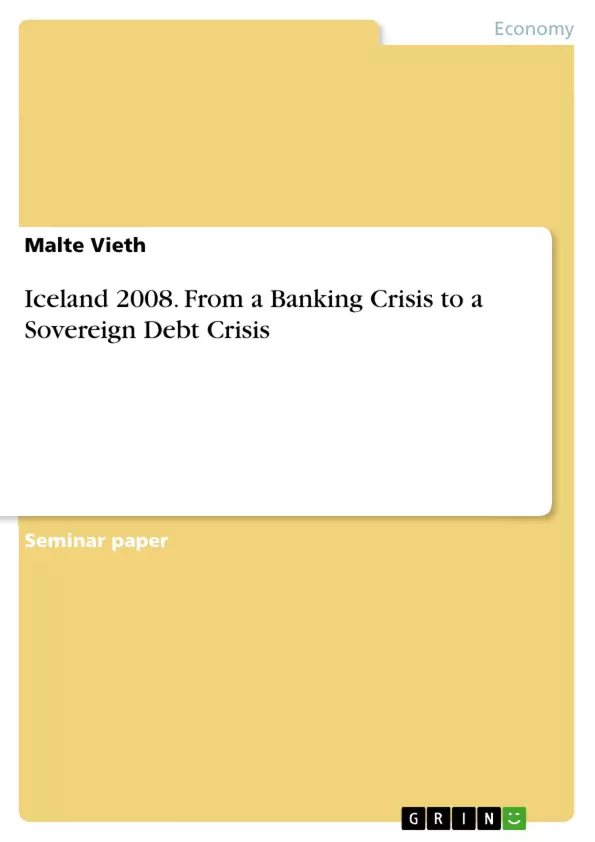During the current financial crisis which started in the year 2007 with the bust of the
American housing market and peaked with the collapse of Lehman Brothers we
observe that many countries face difficulties with their domestic banking system.
For instance Germany had problems with several Landesbanken, the Hypo Real
Estate (HRE) and with Commerzbank or the United States struggled with the
collapse of Merrill Lynch and Bear Stearns leading to an enforced merger with Bank
of America and JP Morgan Chase respectively. In other countries problems in the
banking system were more dramatic. After rumors in the United Kingdom about a
collapse of Northern Rock people went immediately to the branches to withdraw
their deposits. The picture spread the world when people waited outside in a queue
of a branch of Northern Rock to get inside. To prevent a domestic bank run in the
United Kingdom the government nationalized several financial institutions such as
Royal Bank of Scotland; afterwards holding a stake of 95% in this particular
institution. Nowadays Spain faces a huge banking crisis after the bust of the Iberian
housing bubble. But what is the problem of having a banking crisis?
Inhaltsverzeichnis (Table of Contents)
- I. Introduction
- II. Economic Crisis in Iceland 2008 - ongoing
- II.1. History of Iceland
- II.2. Evaluation of the Banking Sector
- II.3. Collapse of the Banking Sector
- II.4. Steps done to solve the Economic Crisis
- II.5. Conclusion
- III. Bibliography
Zielsetzung und Themenschwerpunkte (Objectives and Key Themes)
This paper explores the financial crisis that began in Iceland in 2008, examining its causes, consequences, and the government's response. The paper analyzes the history of Iceland's banking sector, its collapse, and the subsequent economic crisis that evolved into a sovereign debt crisis.
- The impact of banking crises on economic growth.
- The role of financial liberalization and inadequate regulation in contributing to banking crises.
- The relationship between housing market booms and busts and banking crises.
- The effects of government bailouts and fiscal stimulus on sovereign debt levels.
- The specific circumstances of Iceland's banking crisis, including the country's history, the structure of its banking sector, and the government's response.
Zusammenfassung der Kapitel (Chapter Summaries)
The Introduction chapter explores the broader context of the global financial crisis, focusing on the role of banking systems and their impact on economic growth. The chapter examines the risks associated with banking crises and the factors that contribute to them, such as financial liberalization and housing market bubbles.
Chapter II analyzes the economic crisis in Iceland, beginning with a brief overview of the country's history and its reliance on natural resources. The chapter then delves into the structure of the Icelandic banking sector and its vulnerability to external shocks, emphasizing the role of the housing market in the crisis. The chapter concludes by exploring the steps taken by the Icelandic government to address the crisis.
Schlüsselwörter (Keywords)
This paper focuses on the Icelandic banking crisis, financial liberalization, housing market bubbles, sovereign debt crises, government intervention, IMF programs, and economic stabilization.
- Quote paper
- Malte Vieth (Author), 2012, Iceland 2008. From a Banking Crisis to a Sovereign Debt Crisis, Munich, GRIN Verlag, https://www.grin.com/document/271200



